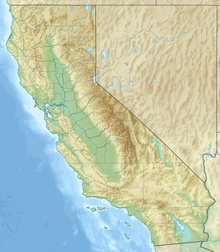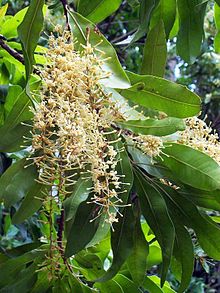아이 글 라과
Aeglidae| 아이 글 라과 시간 범위: Albian–Recent PreꞒ Ꞓ OSDCPTJKPg N. | |
|---|---|
 | |
| 과학적 분류 | |
| 왕국: | |
| Phylum: | |
| Subphylum: | |
| 등급: | |
| 순서: | |
| 인프라 순서: | |
| 슈퍼 패밀리: | Aegloidea 다나, 1852년 |
| 가족: | 아이 글 라과 다나, 1852년 |
| Genera | |
| |
민물 갑각류 현재 남 아메리카로 제한의 아이 글 라과 가족이다. 그들은 유일한 anomurans 신선한 물에 에스피리투산토 섬, 바누아투에 한 은둔자 게 종, Clibanarius fonticola을 제외하고 발견되어야 한다.[1] 그들은 20°S와 50°S,[2]사이에 320킬로미터와 3,500m(1,050–11,480피트)사이에 고도에 살고 있다.[3]
설명
복부 부분적으로 흉부에 감춰져 있다에 Aeglids와 매우 유사한 쪼그리고 앉아 바다 가재. 그의 복부에 중요한 성적 이형성은 헤엄 다리에 fertilised 계란을 운반한 성능에 관계가 있다.[4] 가장 큰 종의carapace 길이 6)(2.4에)지만, 대부분의 상당히 작다에 도달한다는 것.[3]
애글라이드는 잡식성이며 식물 물질을 선호하지만, 성충, 연체동물, 물고기, 파리 애벌레도 먹는다.[5]
내부 해부학은 애글라 철철에 대해 설명되어 왔으며 일반적으로 다른 아노미아누란, 특히 갈라테이드 쪼그리고 앉아 있는 바닷가재와 유사하다. 더듬이샘 방광의 형태학은 민물 생활 양식에 적응한 것으로 해석되는 관형 구조가 꼬인다는 점에서 다른 아모뉴란과 다르다.[6]
라이프 사이클
짝짓기는 구애의 기간이 선행되며, 다른 많은 디카포드에서와 같이 모울팅과 일치하지 않는다.[7] 애글라이드의 알은 청소년기에 부화하여 어른과 매우 닮았다. 그들은 부모님의 보살핌을 받으며 물 밑바닥에서 산다.[8]
Extant TAXON의 복수
애글라는 가족 내에서 유일하게 현존하는 속성으로 약 74종의 현존하는 종을 포함한다.[9] 2008년까지 묘사된 63종과 아종 중 2종은 호수에서, 4종은 동굴에서, 나머지 57종은 주로 강에서 발견된다.[3] 브라질에서는 42종이 발견되는데, 모두 브라질의 남부와 동남부에 국한되어 있다(리오 그란데 도 술만 24종이 서식하고 있다).[9] 다른 종족으로는 아르헨티나, 볼리비아, 칠레, 파라과이, 우루과이가 있다.[3] 3분의 1 이상의 종들이 멸종위기에 처한 것으로 간주되고 있으며, 브라질에서만 8종의 멸종위기에 처한 종을 포함하여 26종이 공식적으로 멸종위기에 처한 종으로 인정되고 있다.[3][10]
종
이 목록에는 2013년[update] 현재 설명된 모든 종이 포함되어 있다.[Note 1]
- 애글라 압타오 슈미트, 1942년
- 애글라 아피니스 슈미트, 1942년
- 애글라 알라칼루피 자라 & 로페스, 1981년
- 애글라 아라우카니엔시스 자라, 1980년
- 애글라 바하몽디 자라, 1982년
- 애글라 브레비팔마 Bond-Buckup & Santos in Santos et al., 2012
- 아에글라 카마르고리 버크업 & 로시, 1977년
- 애글라 카스트로 슈미트, 1942년
- 애글라 카베르니콜라 튀르카이, 1972년
- 애글라 철철 자라 & 팔라시오스, 1999
- 아글라는 자만증 슈미트, 1942년
- 아글라 덴티쿨라타 니코렛, 1849년
- 에글라팽가 자라, 1992년
- 애글라 프랑카 슈미트, 1942년
- 에글라 프란시스카나 버크업 & 로시, 1977년
- 애글라조르기나아과 2013년 산토스 등지의 산토스&자라
- 애글라 그리젤라 본드 버크업 & 버크업, 1994
- 애글라 후이콜렌시스 자라 & 팔라시오스, 1999
- 아에글라 후마와카 슈미트, 1942년
- 사려 깊지 못한 아글라 본드 버크업 & 버크업, 1994
- 애글라 이너미스 본드 버크업 & 버크업, 1994
- 애글라 인터칼라타 본드 버크업 & 버크업, 1994
- 애글라 인터미디어 지라드, 1855년
- 애글라 이타콜로미엔시스 본드 버크업 & 버크업, 1994
- 애글라자라이 본드 버크업 & 버크업, 1994
- 애글라쥬쥬야나 슈미트, 1942년
- 애글라 레비스 (라트레이유, 1818년)
- 애글라 라타 본드 버크업 & 버크업, 1994
- 애글라레아치 산토스 외, 2012년 본드-버크업 & 버크업
- 애글라 렙토켈라 본드 버크업 & 버크업, 1994
- 아글라 렙토닥틸라 버크업 & 로시, 1977년
- 애글라 리굴라타 본드 버크업 & 버크업, 1994
- 애글라 롱이로스트라이크 본드 버크업 & 버크업, 1994
- 애글라 루드비기 2013년 산토스 등지의 산토스&자라
- 애글라 만니 자라, 1980년
- 아글라마마리아타 본드 버크업 & 버크업, 1994
- 아글라마누니플라타 Bond-Buckup & Santos in Santos et al., 2009
- 애글라 마이크탈마 본드 버크업 & 버크업, 1994
- 애글라 뮬러리 Bond-Buckup의 Bond-Buckup & Buckup 등, 2010
- 애글라 신경증 슈미트, 1942년
- 애글라 주 Bond-Buckup & Santos in Santos et al., 2012
- 애글라 산부인과 본드 버크업 & 버크업, 1994
- 애글라오시덴탈리스 자라, 페레즈 로사다 & 크랜달, 2003
- 아글라 오데브레흐티이 뮐러, 1876년
- 애글라 파푸도 슈미트, 1942년
- 에글라 파라나 슈미트, 1942년
- 애글라 파르바 본드 버크업 & 버크업, 1994
- 아글라 폴렌시스 슈미트, 1942년
- 애글라페로바아과 헤블링 & 로드리게스, 1977년
- 애글라 페웬채 자라, 1994
- 애글라 플라나 버크업 & 로시, 1977년
- 아글라 플라텐시스 슈미트, 1942년
- 애글라 포메라나 Bond-Buckup의 Bond-Buckup & Buckup 등, 2010
- 애글라 프라도 슈미트, 1942년
- 애글라 레나나 2010년 산토스 등에서 본드-버크업 & 산토스
- 아글라 링겔레티 본드 버크업 & 버크업, 1994
- 애글라 리올리마야나 슈미트, 1942년
- 아에글라 로시시아나 본드 버크업 & 버크업, 1994
- 애글라 로스트라타 자라, 1977년
- 애글라 살텐시스 Bond-Buckup & Jara in Bond-Buckup et al., 2010
- 애글라 산로렌초 슈미트, 1942년
- 애글라 사기꾼 링겔레, 1948년
- 애글라 슈미티 1979년 홉스 3세
- 아글라성 패혈증 본드 버크업 & 버크업, 1994
- 애글라 세라나 버크업 & 로시, 1977년
- 아글라 단수 링겔레, 1948년
- 애글라 분광기 자라 1986년
- 애글라 스피니팔마 본드 버크업 & 버크업, 1994
- 애글라 스피노사 본드 버크업 & 버크업, 1994
- 아글라 스트리나티시 튀르카이, 1972년
- 애글라 탈카와노 슈미트, 1942년
- 에글라 우루과이나 슈미트, 1942년
- 아에글라 비올라목 본드 버크업 & 버크업, 1994
화석 taxa
Haumuriaegla
하우무리에글라글라 글래스네리는 뉴질랜드 시보트 근처에서 발견된 하우무리아기( 백악기 후기)의 화석을 통해서만 알려진 종이다.[13] 발견 당시, 하우무리에글라는 그 가족에서 유일하게 알려진 화석이자 유일한 해양 구성원이었다.
Protaegla
프로테글라 미니슐라는 멕시코 테페시 데 로드리게스 인근의 틸라우아 형성의 알비안 시대의 암석에서 발견되었다.[14]
진화
가족 전체는 약 7천 5백만년 전 해양환경에서 기원한 [3]뒤 올리고세 때 태평양 쪽에서 남아메리카로 들어온 것으로 생각된다.
참조
- ^ Patsy A. McLaughlin; Talbot Murray (1990). "Clibanarius fonticola, new species (Anomura: Paguridea: Diogenidae), from a fresh-water pool on Espiritu Santo, Vanuatu". Journal of Crustacean Biology. 10 (4): 695–702. doi:10.2307/1548413. JSTOR 1548413.
- ^ Christopher C. Tudge (2003). "Endemic and enigmatic: the reproductive biology of Aegla (Crustacea: Anomura: Aeglidae) with observations on sperm structure" (PDF). Memoirs of Museum Victoria. 60 (1): 63–70. Archived from the original (PDF) on 2008-08-23. Retrieved 2010-03-10.
- ^ a b c d e f Georgina Bond-Buckup; Carlos G. Jara; Marcos Pérez-Losada; Ludwig Buckup; Keith A. Crandall (2008). "Global diversity of crabs (Aeglidae: Anomura: Decapoda) in freshwater". Hydrobiologia. 595 (1): 267–273. doi:10.1007/s10750-007-9022-4.
- ^ Karine Delevati Colpo; Ludmilla Oliveira Ribeiro; Sandro Santos (2005). "Population biology of the freshwater anomuran Aegla longirostri (Aeglidae) from South Brazilian streams". Journal of Crustacean Biology. 25 (3): 495–499. doi:10.1651/C-2543.
- ^ Sandro Santos; Luciane Ayres-Peres; Rosana C. F. Cardoso; Carolina C. Sokolowicz (2008). "Natural diet of the freshwater anomuran Aegla longirostri (Crustacea, Anomura, Aeglidae)". Journal of Natural History. 42 (13 & 14): 1027–1037. doi:10.1080/00222930701882466.
- ^ Jonas Keiler; Stefan Richter; Christian S. Wirkner (2016). "Revealing their innermost secrets: an evolutionary perspective on the disparity of the organ systems in anomuran crabs (Crustacea: Decapoda: Anomura)". Contributions to Zoology. 85 (4): 361–386. Archived from the original on 2017-01-18. Retrieved 2016-12-08.
- ^ M. Almerão; G. Bond-Buckup; M. de S. Mendonça Jr. (2010). "Mating behavior of Aegla platensis (Crustacea, Anomura, Aeglidae) under laboratory conditions". Journal of Ethology. 28: 87–94. doi:10.1007/s10164-009-0159-7.
- ^ Pablo Collins; Veronica Williner; Federico Giri (2007). "Littoral Communities. Macrocrustaceans". In Martín H. Iriondo; Juan César Paggi; María Julieta Parma (eds.). The Middle Paraná River: Limnology of a Subtropical Wetland. Heidelberg: Springer. pp. 277–301. doi:10.1007/978-3-540-70624-3_11. ISBN 978-3-540-70624-3.
- ^ a b c Sandro Santos; Carlos G. Jara; Marlise Ladvocat Bartholomei-Santos; Marcos Pérez-Losada; Keith A. Crandall (2013). "New species and records of the genus Aegla Leach, 1820 (Crustacea, Anomura, Aeglidae) from the West-Central region of Rio Grande do Sul, Brazil". Nauplius. 21 (2). doi:10.1590/S0104-64972013000200008.
- ^ ICMBio(브라질 환경부): 2014년 포르타리아 MMA nº 445, de 17 dezembro de 2014. Lista de Espeace Ameaecadas - 사이바 마이스. 2018년 12월 1일 검색됨.
- ^ Patsy A. McLaughlin; Rafael Lemaitre; Keith A. Crandall (2010). "Annotated checklist of anomuran decapod crustaceans of the world (exclusive of the Kiwaoidea and families Chirostylidae and Galatheidae of the Galatheoidea). Part III – Aegloidea" (PDF). Zootaxa. Suppl. 23: 131–137.
- ^ Sandro Santos; Georgina Bond-Buckup; Ludwig Buckup; Marcos Pérez-Losada; Maegan Finley; Keith A. Crandall (2012). "Three new species of Aegla (Anomura) freshwater crabs from the upper Uruguay River hydrographic basin in Brazil". Journal of Crustacean Biology. 32 (4): 529–540. doi:10.1163/193724012X635935.
- ^ R. M. Feldmann (1984). "Haumuriaegla glaessneri n. gen. and sp. (Decapoda; Anomura; Aeglidae) from Haumurian (Late Cretaceous) rocks near Cheviot, New Zealand". New Zealand Journal of Geology and Geophysics. 27: 379–385. doi:10.1080/00288306.1984.10422305.
- ^ Rodney M. Feldmann; Francisco J. Vega; Shelton P. Applegate & Gale A. Bishop. "Early Cretaceous arthropods from the Tlayúa Formation at Tepexi de Rodríguez, Puebla, Mexico". Journal of Paleontology. 72 (1): 79–90. doi:10.1017/s0022336000024033.
외부 링크
| 위키피아는 애글리대와 관련된 정보를 가지고 있다. |


